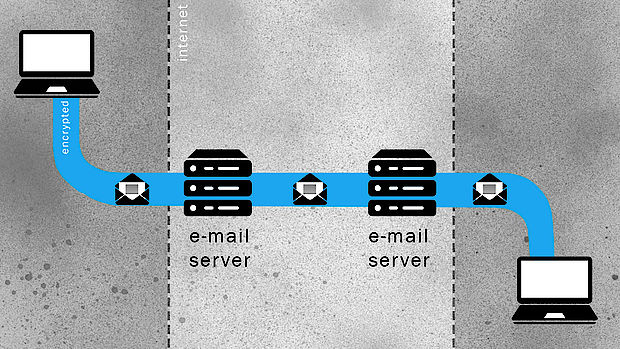What encryption means – and what not
Encryption means to change an original message (“plain text”) in a way with a unique key (“secure text”), so that only people with access to the key can rebuild the secure text into the plain text. Be aware that encryption works on the content of a message – it does not hide identities or other metadata such as time or location. There are different ways of encryption, with different levels of protection. The most important differentiation for journalists is between transport encryption and end-to-end encryption.
Transport
Transport encryption means that the connection between users and servers, or between servers are encrypted. It helps to protect communication against everybody who has access to the connection, for example another person in the Wifi. However, using transport encryption means that the message remains a plain text, and therefore can be intercepted between the connections, especially on the servers. For example, an email that is sent with transport encryption can be read on the server of the email providers.
End-to-end
End-to-end encryption means that only the sender and the recipient have the key to make a plain text to a secure one, and the other way round. They by themselves encrypt the message and exclude the transmitting servers from accessing it.

